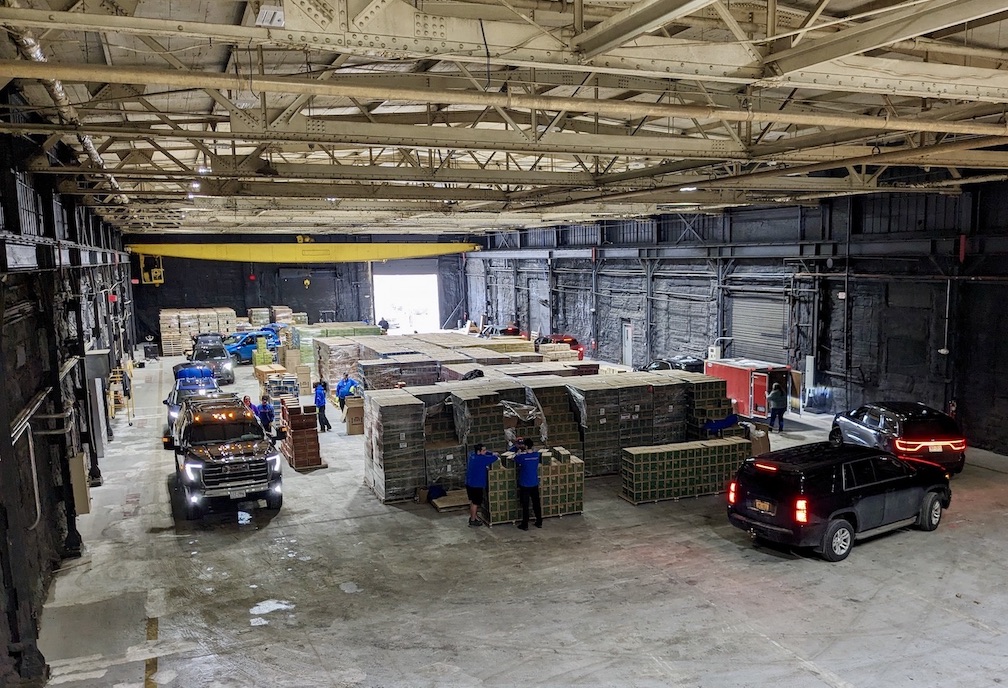Featured News - Current News - Archived News - News Categories
by Terry Duffy
It was a tale of two waste sites Wednesday night.
Attendees at the Lewiston-Porter High School auditorium heard how the community of Fernald, Ohio, was able "to do it right" when it came to successfully addressing a high level radioactive waste problem there. And they came to better understand why Lewiston-Porter hasn't yet been able to.
The Lake Ontario Ordnance Works Restoration Advisory Board hosted a forum where James Bierer, former chair of the U.S. Department of Energy's Citizens Advisory Board in Fernald, detailed how that community successfully removed highly radioactive K-65 wastes at a former uranium production site. Located 17 miles from Cincinnati, the 1,050-acre facility produced 500 million pounds of uranium over a 38-year period ending in 1989. Fernald "was in a race to produce nuclear materials" for the war effort, said Bierer.
With its production came environmental problems - one million pounds of uranium directly released, and billions of pounds of wastes left over, including three silos full of K-65 residues. Fernald residents learned it contained one-half of the world's known supply of K-65.
The Niagara Falls Storage Site contains the other half the K-65. The difference? Fernald was successful in its removal of the waste; the NFSS site thus far has not.
And why not? Fernald functioned as a Department of Defense-managed facility. As such, DOD overseers were readily able to work hand-in-hand with citizens in aiming to resolve the K-65 waste problems and other environmental issues there.
On the other hand, NFSS, formerly managed by DOD, is now managed by the U.S. Army Corps of Engineers. And the Corps, due to its operating structure, is unable to afford the existing LOOW-RAB the same type of latitude in the decision-making processes that Fernald citizen boards had in managing and remediating that site. At present, the local RAB, regarded by local government officials as a highly educated group, extraordinarily knowledgeable in the LOOW Site's many problems, does not function as an officially recognized Corps group in determining the LOOW's future.
Bierer told of the government cooperation that existed with Fernald area residents in addressing that facility's waste problems. Following discovery of a number of environmental problems at the site in the early '90s, including high cancer rates of neighboring residents, local advisory groups formed and government agencies, including DOD, the U.S. Environmental Protection Agency and Ohio's EPA listened. "The federal government encouraged input. Our boards were viewed as being on equal with EPA and DOD, said Bierer.
The result? More than $4.1 billion was ultimately spent by the government to remediate Fernald over a 13-year period. Twenty percent of its total waste - the high level K-65 residues - was removed for safe storage at a Texas facility. The remaining 80 percent of WWII era wastes was successfully remediated and remains on site. Today Fernald, a former uranium processing facility, functions as a preserve, drawing visitors and experiencing outside residential and commercial development in its vicinity. "We turned a liability into an asset," said Bierer.
NFSS stands in direct contrast.
In the presentation that followed, Dr. William Boeck, chair of the LOOW RAB radiological committee, told attendees the 1987-era Interim Waste Containment Cell at NFSS, which holds high-level radioactive wastes, is considered safe by the government at present with respect to its impact on the public and the environment. But it has uncertainty in its future.
He explained that DOD evaluated the LOOW site in the early 1980s en route to the eventual cleanup and building of IWCS. A number of buildings built in prior decades were leveled, and varying concentrations of radioactive waste residues brought in earlier by government agencies and private companies, and stored in five structures, in open fields and a silo at LOOW were consolidated into what is now the 18-acre IWCS. Problem is, the IWCS, which houses such concentrations as K-65, L-30, F-32, L-50 and R-10 radioactive wastes, contains extraordinary amounts of uranium. And it is all contained in what was formerly a water treatment facility with no lining on its bottom, constructed clay barriers on its sides and levels of dirt and clay on its cap. It holds half of the world's known supply of radium and many fear it is susceptible to leaks.
Boeck told the group the U.S. EPA in 2009 determined that the IWCS' various high level radioactive wastes, due to their extraordinary long life and dangers to the public, should be stored long term in a setting being "no less stringent than what is anticipated for standards for the Yucca Mountain geologic repository."
They remain however stored in the IWCS on Pletcher Road. The cell has outlived its anticipated 25-year life and is expected to be evaluated by the Corps in the future en route to its expected removal and ultimate remediation. However, unlike Fernald, the local RAB does not have a working relationship with the Corps in determining its fate.
A tale of two waste sites.
"The monitoring of IWCS (by the Corps) is good. It is safe (today), but it doesn't guarantee tomorrow," said Boeck as he concluded his presentation.





























